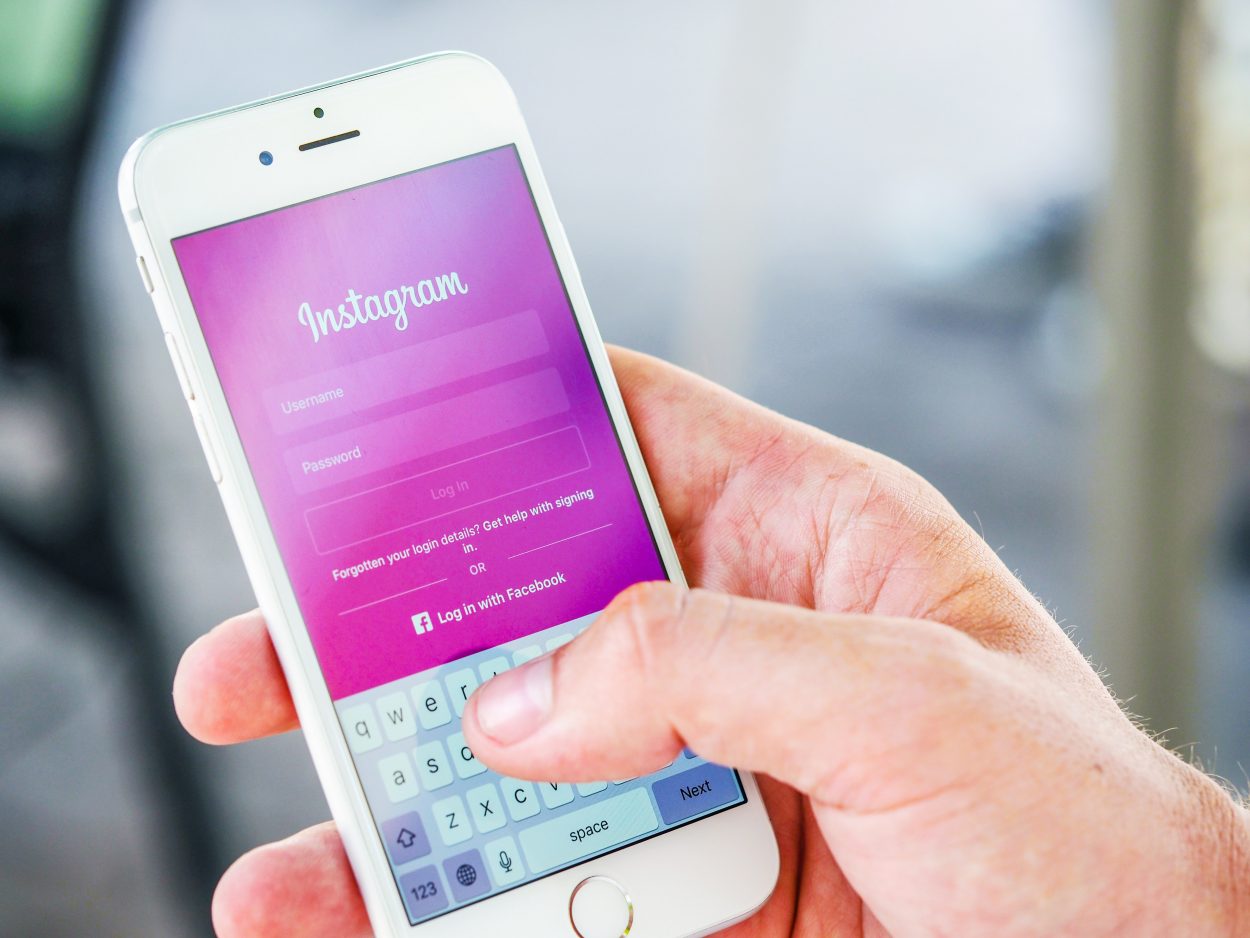B2B Myth of the Week: Instagram for B2B Marketing Doesn’t Work
by MGB2B
Myth: Instagram is Only for B2C Brands
Fact: Using Instagram For B2B Marketing Is Not Only Smart, It’s Necessary
So how do you go about this? Where do you begin?
Answer: Instagram for B2B marketing.
We have officially progressed into an era of marketing based on likes and followers. As much as the B2C community dominates this field, the approach of reaching users through visual content includes you too. As content continues to flood our phones by the millisecond, grabbing your audience’s attention effectively is an essential aspect of social media marketing. You must cut through the competition’s noise and shout from the rooftops, “Look at our content! Learn how we can solve your problems! And we’re engaging and relatable to boot!”
Instagram Personifies Your Brand
If you’re unfamiliar with the term Instagram-worthy, it’s a new “kids-these-days” way of describing something aesthetically pleasing. But don’t be fooled, this isn’t only applicable for trendy food pictures. Your brand has the opportunity to provide personal, visual hooks to reel your audience into your newsfeed and furthermore, your company.
Not every photo will encapsulate the mantra of your company’s motto or the services and products you provide. That’s okay; maintaining an excessively professional social media presence can be off-putting. Establish an unfiltered look at your company culture and you’re guaranteed to grant your audience a sense of familiarity that in confidence says, “This is who we are.”
[Take a look at Google’s Instagram account. There is nothing regarding search engines or computer software. Instead, you’ll find happy puppies, happy consumers, and colorful creations of the Google logo made of Fruit Loops. This may constitute as B2C branding, but as any consumer can see, Google is a bright, user-friendly company with a feed that associates happiness to their name — a universal message that will reach both consumers and businesses alike.]
We’re All People
Instagram reminds you over and over of the ‘real person’ on the other end of the content you consume, and it’s essential to establish that sense of personal presence. I’m here to remind you that in this case, that real person is you! It’s extremely important to appeal not only to the receiving business’ standards but their personal inclinations as well. Sure you’d like to maintain a professional appearance, but weekly newsletters and a well-designed website can tow that line. Using Instagram for B2B marketing is your opportunity to sell your company with personality and a purpose to please. Creating a unique hashtag, communicating directly with followers, and publicizing your employees with ear-to-ear smiles will show your business to recognizes the importance of authenticity.
Stay Up to Date on Niche Trends
Businesses want to work with other businesses that appeal to their priorities and present themselves in an approachable manner. Many times, pictures do a better job of this than words. How do you maintain this as an effective and relevant Instagram feed? By staying thoroughly active in the social media-verse. There’s nothing more impressive than scrolling by a professional account referencing a popular trend. Understandably it’s not your first priority in selling your brand, but it’s important to remind your audience that your company is keeping up with the times and in relation, holds the capacity to deliver time-relevant content for all consumers.
Stay Buyer-Focused
At the end of the day, you’re still selling — so be mindful of your target audience. What are their goals? Their pain points? What do they need? Then answer these questions, but not just in terms of your products and services. Here’s where the human connection can come to play once more. Consider their values, lifestyles, and visions and think about how your services can echo them.
The story-telling strategy behind B2C marketing is becoming increasingly applicable in the B2B space. Instagram now has 1 billion users worldwide. If you think they’re all millennials, think again. Over fifty percent of Instagram users are between the ages of 34 and 64. In the coming years, this trend will only grow, so it’s important to start testing the waters now.
If you’re still unconvinced that using Instagram for B2B marketing is worth your time, take it from these companies that continue to nail it!
Continue ReadingB2B Myth of the Week: Using Humor in B2B Marketing Is A Bad Idea
by MGB2B
Myth: B2B Brands Can’t Be Funny
Truth: Humor Can Be Effective, It Just Needs to Be Done Right
Who says B2B brands can’t be funny? Not us. True, using humor in B2B marketing requires a deft hand (think: wry smile versus a big-knee slapper). But since most B2B brands shy away from being funny, adding a dash of mirth to your marketing can make you stand out from the rest.
What Can Humor Do For Your Brand?
1. Develop Brand Affinity
It’s important to remember your audience is made of up real people with personalities. At the end of the day, your advertising and social media content is targeted at these real people, and they’re making buying decisions daily. Serving up a smile amidst copious amounts of other content can spark an affinity for your brand, giving your company a toe-hold that might not have been there before. To do so, you don’t need to whack your audience over the head. Go for subtlety rather than over-the-top comedy.
2. Get A New Spin on a Service
Many B2B brands try to include everything they do or get super technical to make a hard sell. But overwhelming your buyer isn’t going to be very helpful to them – or to you. So why not take a different approach? Cisco promoted their router by offering it up as a Valentine’s Day gift. While that seems illogical (and according to them, it is), the ad did its job by making a mark. Cisco suddenly had something it was known for, this extremely creative and humorous ad. That got people thinking about their brand – and looking at their more informative content.
3. Garner Likes – And Shares
You develop content because you want people to see it. The more eyes on your content, the higher the chance of getting the right people interested and clicking. By algorithm alone, a mere like from your audience can expand the reach of your content significantly, even more so if the content is shared. A little well-timed humor can increase your chances of both.
4. Enhance Your Story
Oftentimes, what your brand is promoting isn’t easy to explain. Especially now, when marketing is all about story-telling. Being funny adds the perfect opportunity to make your content engaging and boost your brand’s story. Tim Washer, comedian and corporate humorist, has stated, “Comedy can cut through all the noise, it makes the point in a very clever way, and it connects with people so they listen.” When done right, humor is relatable and understandable. And that adds tremendous strength to the content your brand puts out. Want to see a great example? Check out Slack Communication’s outdoor campaign.
Where can you use humor?
This depends on your brand voice, but humor can live across your content – from ads to blog posts to video content. But remember, your attempts need to back a solid message – and be distributed in the right places. Facebook is an easy place to insert a little levity, like Park New Haven does here. And although LinkedIn is a more professional channel, you can still benefit from a bit of strategically placed wit. Remember, the key is a light touch. You’re not looking to define your brand as the class clown. You’re simply looking to elicit an appreciative response. Need help getting started? Drop us a line.
Continue ReadingThree Reasons Why LinkedIn For B2B Marketing Can Set You Ahead Of The Pack
by MGB2B
While you might not realize it, LinkedIn for B2B marketing is nothing to sneeze at. In fact, it’s the most dominant social media channel when it comes to B2B marketing. It offers a unique opportunity for brand promotion and lead generation to an audience whose mind is already on business. That alone should make it a must for B2B marketing strategies. Don’t believe it? According to LinkedIn Marketing Solutions, 80% of B2B marketing leads from social media come through LinkedIn. On top of that, 92% of B2B marketers use this platform. What’s more, LinkedIn is responsible for 46% of all social media traffic to B2B websites.
Now that you understand it’s breadth, here’s three ways LinkedIn can work for you:
1. Your Company Page
First and foremost, let’s talk about your main company page. It heightens brand awareness and legitimacy just by the sheer fact of having one. But the more engaging your page, the better it will perform. Here’s where you can share your company story, showcase your executive branding, and create compelling content that establishes trust, authority, and thought leadership. Company and industry news, videos, tutorials, helpful white papers, and infographics all have a home here. And thanks to easy-to-use analytics, you’ll be able to see what is working (and what isn’t) so you can shift your strategy to be more effective.
2. LinkedIn Groups
One of the biggest benefits of LinkedIn for B2B marketing is the group feature. In 2013, 81% of users belonged to at least one group, and that number has only grown. Groups are the epitome of targeted marketing: instead of just having a generic public page, you can develop a niche closed community that connects with individuals with shared interests. Not only are they a great place to foster brand recognition, you can position your company as an industry leader within different sectors. Better yet, groups are a great place to get a micro view of marketing trends and monitor the needs of those you are targeting.
3. LinkedIn Pulse
Pulse gives users daily news related to their specific interests. So if your brand posts about your industry frequently, your stories have a higher chance of being featured on a potential lead’s Pulse feed. This means keeping a regular schedule of consistent, meaningful posts is extremely valuable for increasing your reach – and leads.
Off all the social networks, LinkedIn is the best place to interact professionally with your target audience. Keep in mind, it’s not a place to sell or make deals. Instead, it’s a place to establish your brand as a trustworthy and reputable resource. When you use LinkedIn for B2B marketing, you can attract higher quality leads, create targeted connections, and continually reinforce relationships with prospects and current customers. But like all social media (and marketing for that matter), to succeed, you have to have a strategy in place. If you need help getting off the ground, start by reading this piece on content strategy – or by giving us call.
Continue Reading


